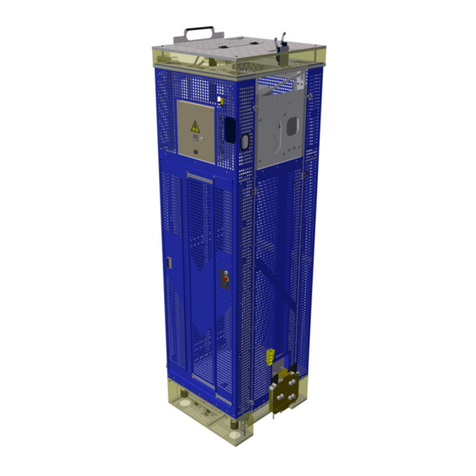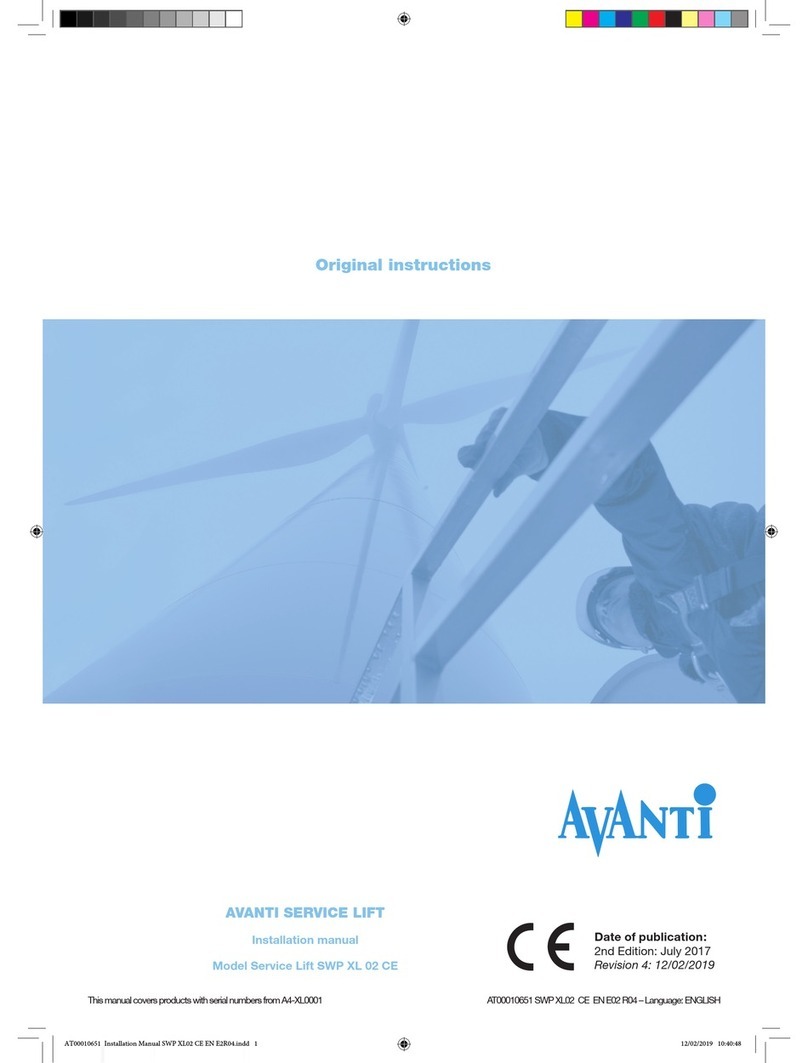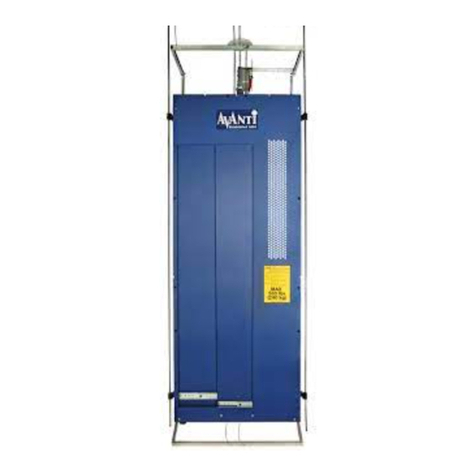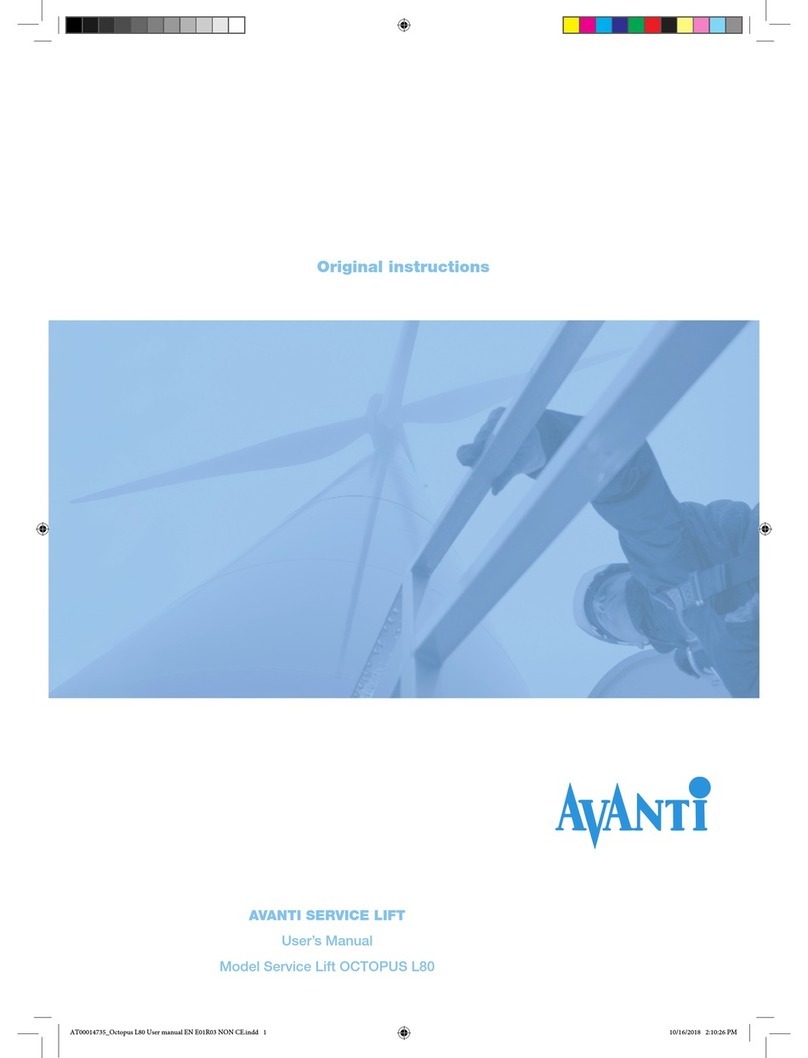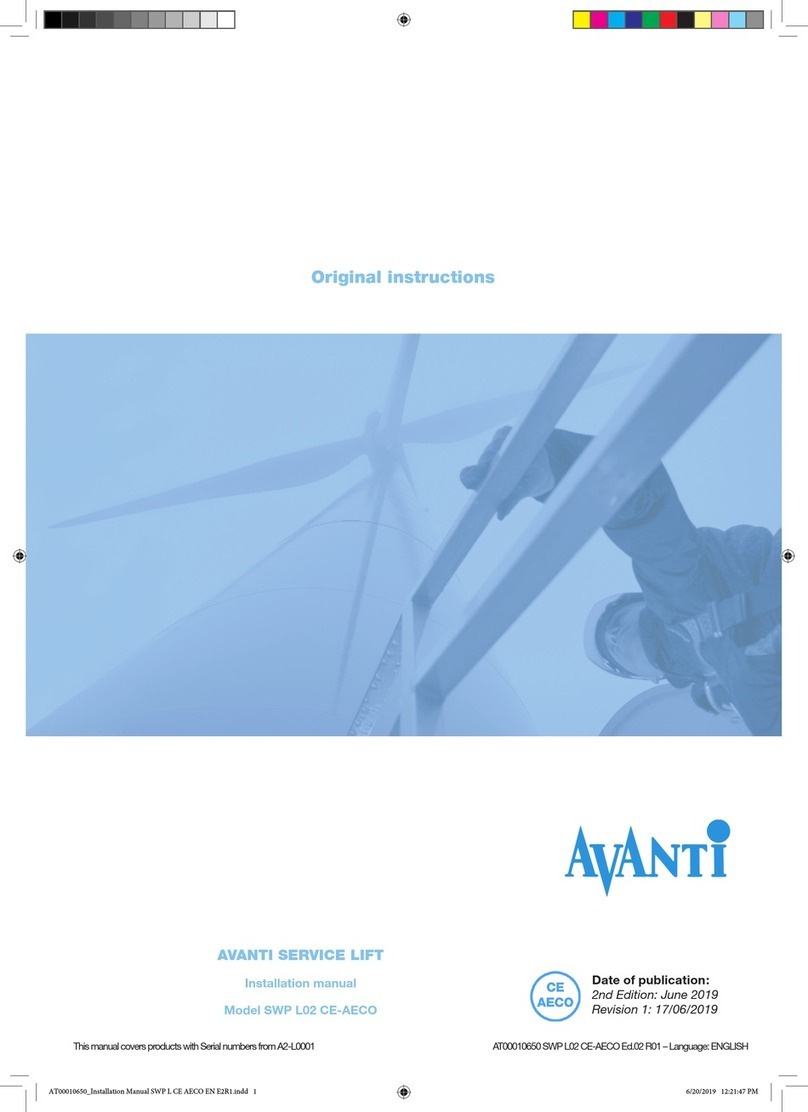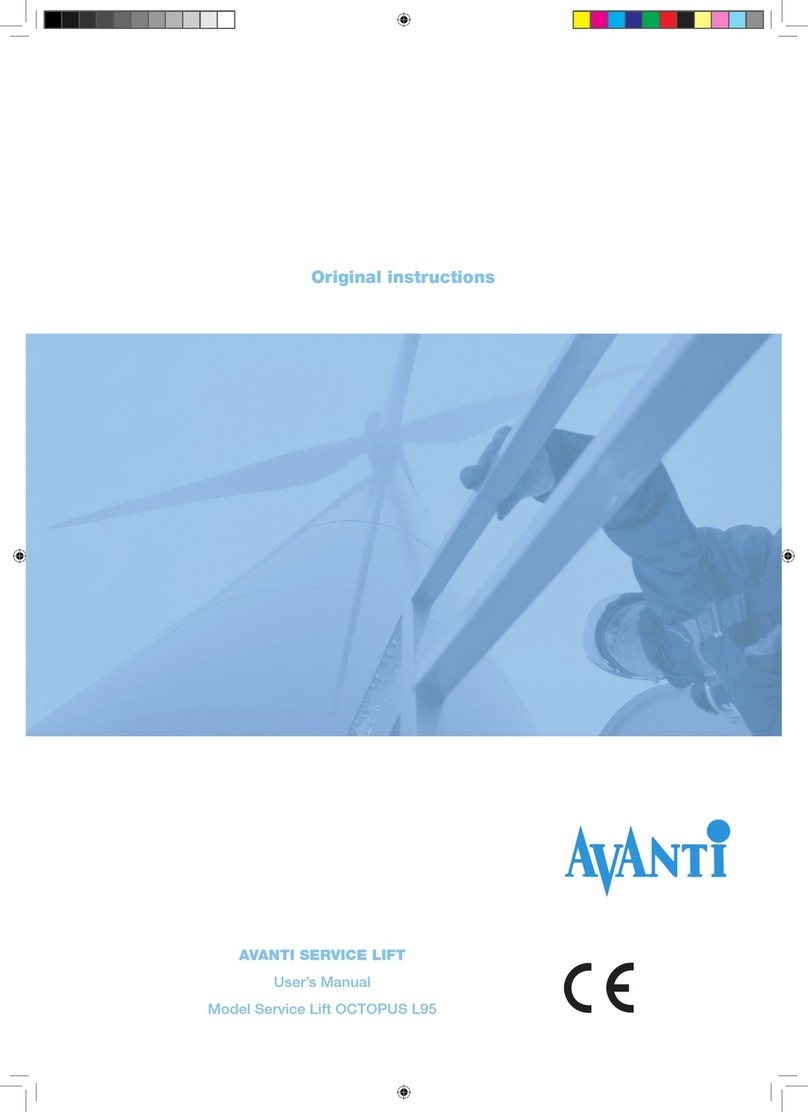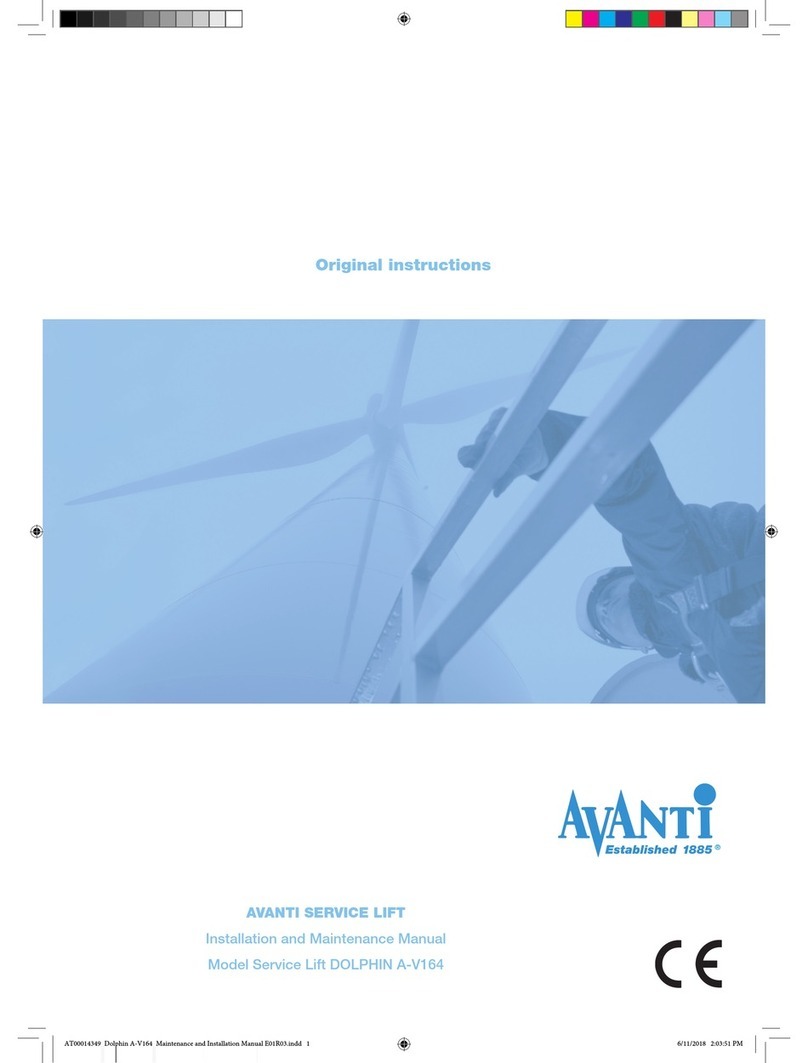2.3 Cautions
Use and daily inspection of the service lift shall only
be performed by person who has gone through the
relevant training associated with the Avanti service
lift use and daily inspection and is in possession of a
valid (non expired) certificate for the task.
Installation and maintenance of the service lift shall
only be performed by Certified technicians.
Personnel must be at least 18 years of age.
The staff must be familiar with the relevant accident
prevention instructions and must have received
proper training in these.
Personnel are obliged to read and understand this
Maintenance and Installation Manual.
Personnel shall wear PFPE (safety helmet, full body
harness, shock absorber, lanyard and slider) at all
times.
A copy of the Maintenance and Installation Manual
must be handed out to the personnel and must
always be available for reference.
If more than one person is entrusted with one of
the above tasks, the employer shall appoint a
supervisor in charge of the operation.
Self-locking nuts must be used at all times. The
screw must extend from the nut by at least half
of the thread diameter. The nut may not be used
once it has become possible to loosen by hand!
If any damage or faults are found during operation,
or if circumstances arise which may jeopardize
safety: immediately interrupt the work in progress
and notify the supervisor or employer!
All tests/repairs of electrical installations may only
be performed by a certified technician.
All repairs to the traction, braking and supporting
systems may only be performed by a certified techni-
cian.
If any supporting parts are repaired or replaced,
the operational safety of the system must be tested
and verified by a certified technician.
Only original fault-free parts may be used.
Use of non-original parts will render the manufac-
turer’s warranty void and any type approval invalid.
No modification, extension or reconstruction of the
service lift is allowed without the manufacturer’s prior
written consent.
No warranty is provided against damage resulting
from reconstruction or modification of equipment or
use of non-original parts which are not approved by
the manufacturer.
Service lift must be inspected by Certified techni-
cians before first use.
Service lift must be inspected at least once a year
by Certified technicians. In case of high operating
frequency or severe conditions of use, more frequent
inspection is required.
Service lift is designed for a lifetime of 20 years with
an operating frequency of approximately 12.5 h/year
(250 h in total).
Service lift may not be used by persons who are
under the influence of alcohol or drugs which may
jeopardize working safety.
The service lift shall not be used in case of fire in the
tower.
Service lift shall ONLY be used when the turbine is
not generating power.
All wind farm site specific rules must be followed.
Service lift shall not be used during inclement
weather, including wind speeds over 18 m/s.
Avoid injury – follow all instructions!
Owner must verify the need for third par-
ty service lift inspections with the local
authority and comply with the standards
specified.
2.4 Terms and definitions
Terms Definitions
Certified technician Person who has gone through the relevant training associated with the scheduled task from Avanti
or from a certified trainer and is in possession of a valid (non expired) certificate for the task.
User Person who has gone through the relevant training associated with the Avanti service lift
use and daily inspection and is in possession of a valid (non expired) certificate for the task.
Manual descent Action performed to descend the lift at a controlled speed without power supply by manually
opening the hoist electromagnetic brake. (Also manual no-power descent)
AT00012570 OCTOPUS installation CE 2nd EN R2.indd 7 10/18/2018 8:55:07 AM
